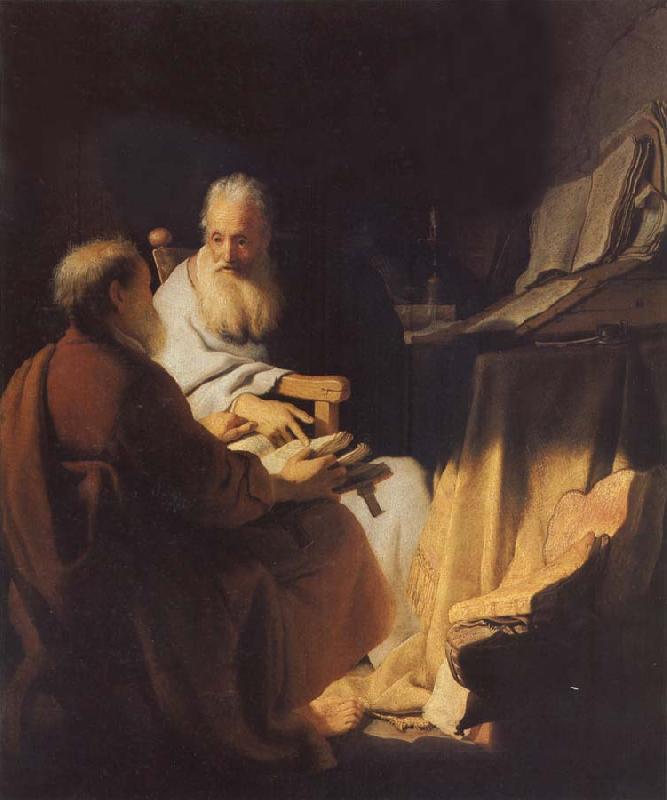
* * * *
I’ve been remiss in posting lately. December 2022 turned out to be a busy time, what with two family Christmases, one up in Massachusetts. (Which included my driving up there through yet another “storm of the century.”) That’s why my posts went from Advent ’22 to Epiphany ’23 – without much to say about Christmas. (Not to mention having to say “farewell Mi Dulce.”)
But hopefully I can now start getting back up to speed.
On that note, last week’s January 18 was the Feast Day for the Confession of St Peter. This Wednesday, January 25 is the Feast Day for the Conversion of St Paul. I covered these two feast days in Peter confesses, Paul converts, from January 2016. The post started off saying that on June 25 each year we have a feast day for both Apostles together. But in January we remember both men separately. “Or more precisely, we remember how these two ‘Pillars of the Church‘ took two completely different paths to the same destination.” That is, closer to God:
On 18 January we remember how the Apostle Peter was led by God’s grace to acknowledge Jesus as the Christ (Matthew 16:13-20), and we join with Peter, and with all Christians everywhere, in hailing Jesus as our Lord, God, and Savior.
Put another way, January 18 commemorates Peter as the first apostle to confess Jesus as Messiah. On the other hand, the January 25 Feast Day commemorates how “Saul (or Paul) of Tarsus, formerly an enemy and persecutor of the early Christian Church, was led by God’s grace to become one of its chief spokesmen.” (See Conversion of St. Paul, emphasis added.)
In other words, Peter came to his position of authority from “inside the church.” On the other hand God pretty much dragged Paul kicking and screaming into his position of authority.
Turning to the Confession of Peter, that refers to this New Testament episode:
[The] Apostle Peter proclaims Jesus to be Christ – the Messiah. The proclamation is described in the three Synoptic Gospels: Matthew 16:13-20, Mark 8:27–30 and Luke 9:18–20. The proclamation of Jesus as Christ is fundamental to Christology … and Jesus’ acceptance of the title is a definitive statement for it in the New Testament narrative.
In turn, on January 25 we remember how Paul was once a devout and zealous enemy of early Christians, as told in Galatians 1:13-14. He was “extremely zealous for the traditions of my fathers,” persecuting the newly-formed Christian Church and trying to destroy it. But then came his Damascus Road Experience. He was literally struck blind, for three days. Thus the claim that Paul was “pretty much dragged kicking and screaming into his position of authority.”
The Bible also includes his part in the stoning of Stephen, in Acts 7:57-8:3. (“Saul was ravaging the church, and entering house after house, he dragged off men and women and committed them to prison.”) So in plain words, Paul’s Damascus Road experience “changed him from a Christ-hating persecutor of Christians to the foremost spokesman for the faith.” But before that could happen, he had to convince those Christians – in Jerusalem especially – that his change of heart was genuine. Their change of heart came about mostly through the work of Barnabas:
To sum up, if it hadn’t been for Barnabas and his willingness to give Paul a second chance – a second chance for the formerly zealous persecutor of the early Church – he might never have become Christianity’s most important early convert, if not the “Founder of Christianity.”
For more on Paul’s change of heart, see Paul restored – from the Damascus Road, from April 2016, which spoke of the transforming power of Jesus.
Which sums up the theme for the post, that power to be transformed – if you let God into your life and read the Bible with an open mind. As for my not being able to do a post for Christmas ’22, you can see some background details at The 12 days of Christmas, 2018-2019. Which included the thought that “If Jesus had been a conservative, we’d all [still] be Jewish!“
* * * *

* * * *
The upper image is courtesy of Albert Bierstadt Museum: Two Scholars Disputing REMBRANDT.
The Book of Common Prayer. The “corporate-mystical” prayer is on page 339, the post-communion prayer for Holy Eucharist, Rite I.
“Storm of the century.” See December 2022 North American winter storm – Wikipedia, on the “extratropical cyclone created winter storm conditions, including blizzards, high winds, snowfall, or record cold temperatures across the majority of the United States.” I tried to make the 1000-mile drive in two days, but because of that snow, ice and fog had to stop the second night in Milford PA…
“The 12 days of Christmas, 2018-2019.” That post also included a note that the concepts of sin, repentance and confession should be viewed as tools to “help us grow and develop, and are not to be used as a means of social control.”
The lower image is courtesy of Caterpillar To Butterfly – Image Results. See also How Does a Caterpillar Turn into a Butterfly? – Scientific American.
* * * *


